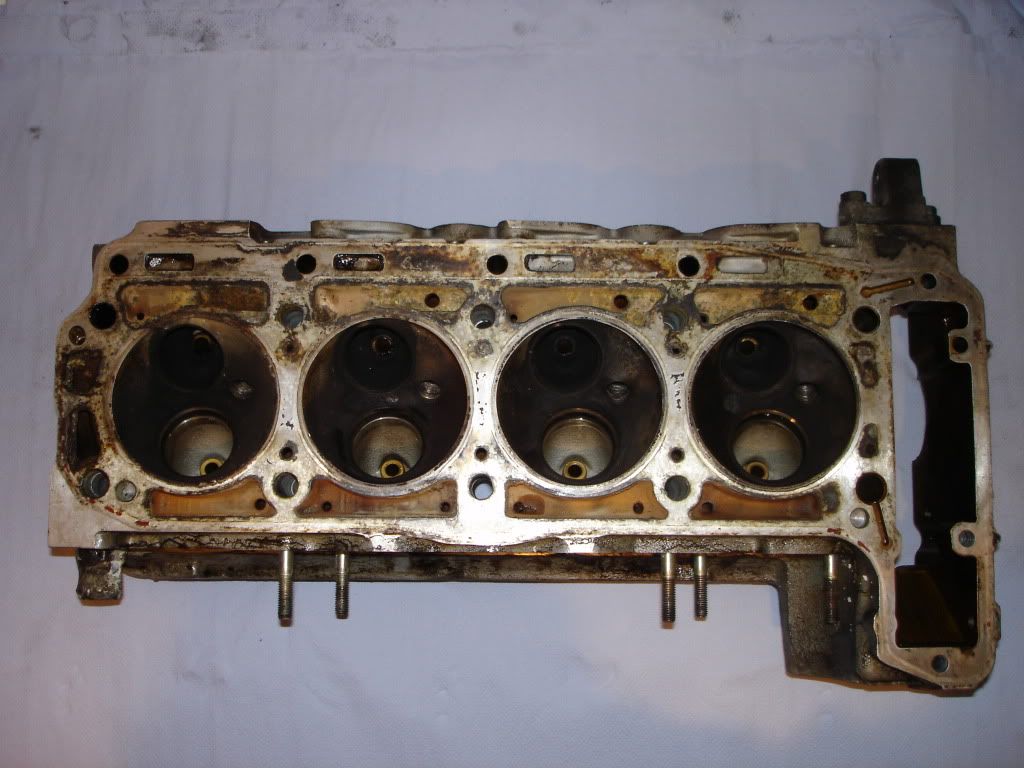Have been stripping down a 190E for a head gasket replacement and cleanup just recently.
Took the head off today and you can clearly see where the gasket has breached the waterway and into the cylinders on the back two on the exhaust side:

What's more interesting is to see that the waterways for the affected cylinders were quite badly furred up as well (notice the 'missing' holes ) I'm guessing due to neglected coolant changes over the years, and/or topping up with plain hard tap water.
) I'm guessing due to neglected coolant changes over the years, and/or topping up with plain hard tap water.
It had a water pump and thermostat about 5 years ago IIRC when I had a brief squint through the service history. Perhaps a cry for help a bit too late.
I'll certainly be cleaning it all out properly, checking the waterways on the block and flushing the heater matrix and radiator out before it all goes back together. And checking the head for trueness, although I feel that a very light 'facing'/skim would be worthwhile regardless in this instance?
Will
Took the head off today and you can clearly see where the gasket has breached the waterway and into the cylinders on the back two on the exhaust side:

What's more interesting is to see that the waterways for the affected cylinders were quite badly furred up as well (notice the 'missing' holes
It had a water pump and thermostat about 5 years ago IIRC when I had a brief squint through the service history. Perhaps a cry for help a bit too late.
I'll certainly be cleaning it all out properly, checking the waterways on the block and flushing the heater matrix and radiator out before it all goes back together. And checking the head for trueness, although I feel that a very light 'facing'/skim would be worthwhile regardless in this instance?
Will

